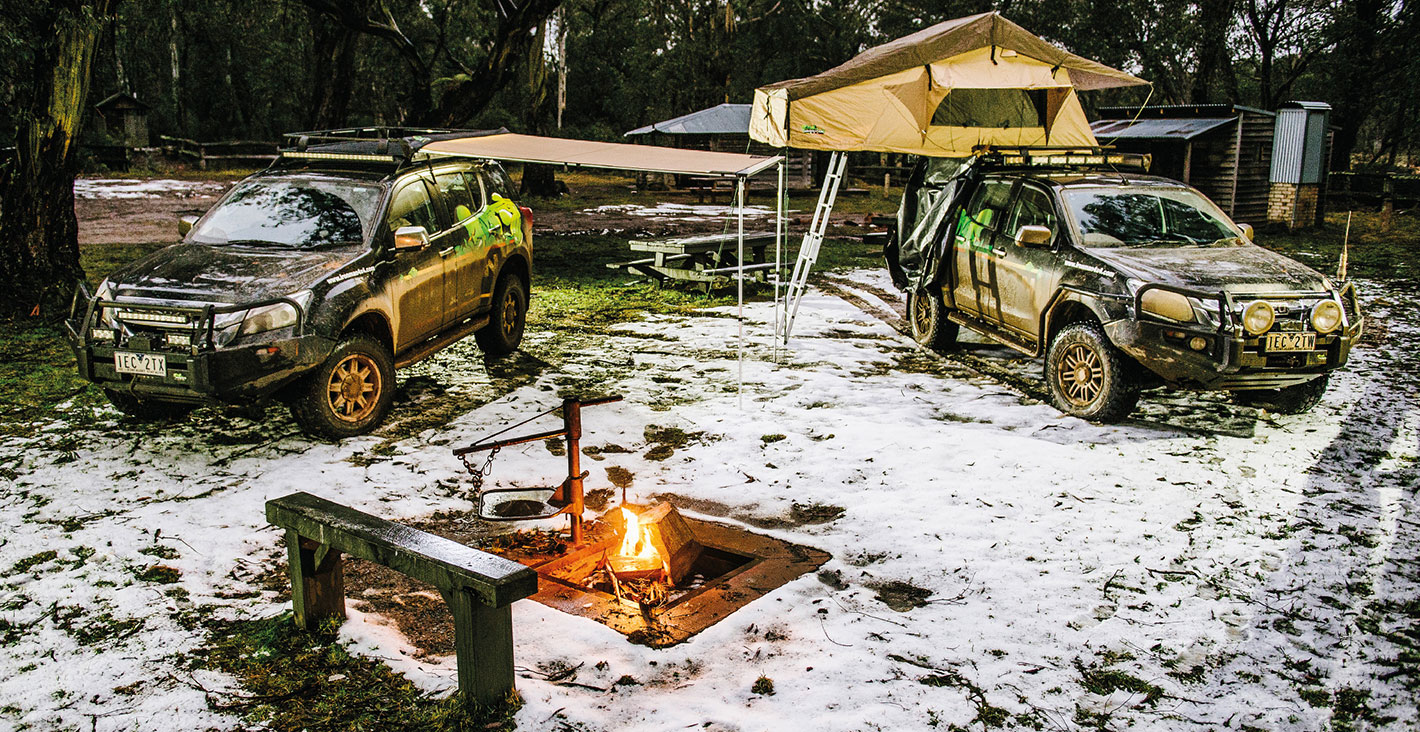Your Shopping Cart Is Empty
You have no items in your shopping cart.
Let's go buy something!
You have no items in your shopping cart.
Let's go buy something!
So it's the weekend and you want to get dirt beneath your boots and grime under your fingernails, but setting up a tent after a long commute is the last thing most of us want to do, especially when the last rays of sunshine are slowly receding.
Enter the rooftop tent, where a good night's rest is only a couple of minutes away. Instead of smacking pegs into terra firma or squeezing into a swag (there's nothing wrong with that, mind you), a rooftop tent is ready almost immediately upon arrival at camp, and it provides ample space, comfort and convenience.
Rooftop tents are easy to use, convenient and comfortable, The views are better, less sand and dirt gets into your tent, and there's extra security, with Australia's abundant wildlife.
Not only can you prevent unwanted attention by ground-dwelling prickly critters looking for shelter at night, you are also up higher to, as Ironman 4x4's Greg Smith put it, catch the breeze on a warm night.
As well as the luxury of convenience, a rooftop tent also maximises space by freeing up cargo areas for other essential camping and off-roading accessories.
As a unit is installed on the roof racks of the vehicle or camper trailer, it means the rear cargo area can be used for other essential bits of kit. It also means sleeping material can be kept in the rooftop tent and be ready upon arrival at your destination.
A well-designed rooftop tent shoulf feature windows and doors with the ability to open and provide cross-flow ventilation, which eases the sweats on those hot, wet nights in the tropics.
Finding the perfect campsite is not an issue, as long as you have somewhere level, you will open the tent and be comfortable.
Adding 60-odd kilos to the top of any 4x4 means there will be significant changes to ride, handling, off-roading ability and fuel efficiency - heck, your 4x4's not cutting through the breeze like it did when it left the showroom. However, a quality-made product shouldn't hinder a vehicle's go-anywhere ability too much.
Increased fuel consumption is definitely one [negative], the evolution in design and construction of the rooftop tent in recent years means they are a lot lighter than they once were. The biggest advancement has been in the materials and construction area.
So even though extra weight affects your bank balance when it's time to refuel, it's not as bad as it used to be thanks to the advancement in design, construction and the lighter materials used. However, it's important to remember that traditional tents and swags are also typically positioned on the roof racks, so they'll just as easily increase the amount of fuel pumping through the drivetrain.
And, a rooftop tent has less effect on fuel consumption than a camper trailer or caravan.
Another issue is the increased height, which may be a problem when in town (tunnels, carparks, etc.). Forgetting you have a rooftop tent on in underground carparks or garages ... it happens frequently.
The extra height and weight a rooftop tent adds to a vehicle puts limitations on where you can head for your next adventure - if it involves serious rock-crawling through narrow passes, maybe it's best to leave the rooftop tent at home and pack the swag.
A higher centre of gravity is something owners need to be extremely wary of when off-roading, (A roof-top tent) raises the centre of gravity, so the driver needs to be a bit more aware, especially in situations where the vehicle approaches extreme roll angles. The careful packing of any vehicle with regards to centre of gravity is paramount to not create instability on off-road angles.
The obvious remedy to any issues with off-road performance is to ensure the vehicle is set-up correctly by adding necessary aftermarket componentry. It needs to be understood that if the vehicle's suspension is in good shape there shouldn't be a problem, the definition of good shape would be a vehicle with an uprated aftermarket springs and shocks suspension package.
A [rooftop] tent will increase the height of the centre of gravity to the vehicle, but the uprated suspension will compensate for this.
As mentioned - and it may seem like a no-brainer - the extra height you're now driving around with can also cause problems when trundling through low-hanging scrub. Remote tourers will know all too well how tight some bush tracks can get, and carrying an extra 50 or so centimetres on top of your roof rack could stop you in your tracks.
A well-designed rooftop tent shouldn't put too many restrictions on your off-road adventures, and it should even make reaching your remote destination less stressful. A quality rooftop tent should be able to handle outback dust, corrugations, and anything else an avid adventurer can throw at it.

Truracks stocks the latest Ironman 4x4 rooftop tent. The Ironman 4x4 Roof Top Tent features a raised 'Climate Cover' Flysheet to control temperature and reduce condensation; a pop-up window awning; flyscreen windows; waterproof, breathable 280GSM ripstop polycotton canvas; lightweight aluminium and insulated floor; luxury 65mm high-density foam mattress; a retractable aluminium ladder; YKK zips; rugged 1000D waterproof PVC 'On Car' cover; while a high-lift extension kit is available, too. The tent is supplied with two crossmembers to distribute the weight evenly across mounting racks.